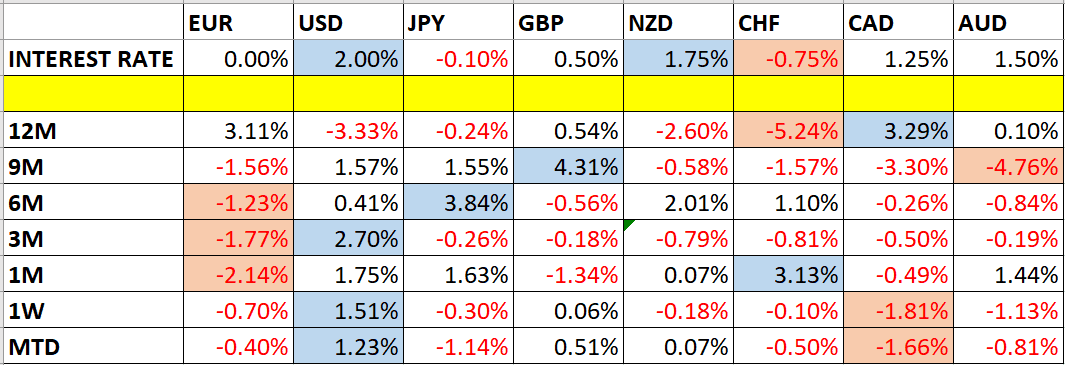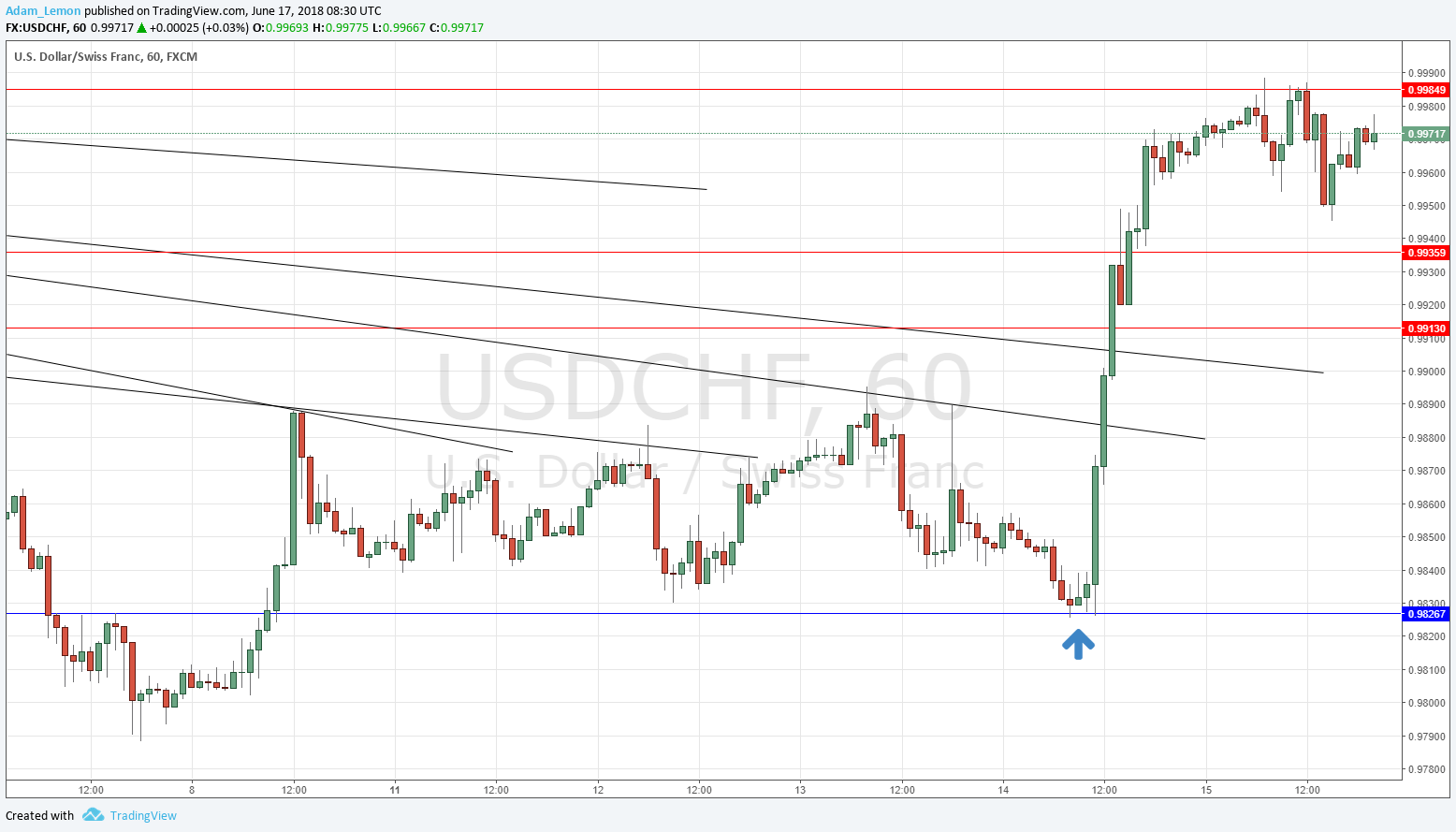This week we’ll begin with our monthly and weekly forecasts of the currency pairs worth watching. The first part of our forecast is based upon our research of the past 16 years of Forex prices, which show that the following methodologies have all produced profitable results:
Trading the two currencies that are trending the most strongly over the past 3 months.
Assuming that trends are usually ready to reverse after 12 months.
Trading against very strong counter-trend movements by currency pairs made during the previous week.
Buying currencies with high interest rates and selling currencies with low interest rates.
Let’s take a look at the relevant data of currency price changes and interest rates to date, which we compiled using a trade-weighted index of the major global currencies:
Monthly Forecast June 2018
For the month of June, we forecasted that the best trade would be long USD/SEK. The performance so far has been a little negative, as shown below:
Currency Pair | Forecast Direction | Interest Rate Differential | Performance to Date |
USD/SEK | Long ↑ | 2.25% (1.75% - -0.50%) | -0.33% |
Weekly Forecast 10th June 2018
Last week, we made no forecasts, as there were no strong counter-trend price movements.
This week, we make no forecasts, as there were again no strong counter-trend movements.
This week has been dominated by relative strength in the U.S. Dollar, and relative weakness in the Canadian and Australian Dollars.
Volatility was higher last week, with 41% of the major or minor currency pairs changing in value by more than 1%. Volatility is likely to be similar over the following week.
You can trade our forecasts in a real or demo Forex brokerage account.
Previous Monthly Forecasts
You can view the results of our previous monthly forecasts here.
Key Support/Resistance Levels for Popular Pairs
We teach that trades should be entered and exited at or very close to key support and resistance levels. There are certain key support and resistance levels that should be watched on the more popular currency pairs this week, which might result in either reversals or breakouts:
Currency Pair | Key Support / Resistance Levels |
AUD/USD | Support: 0.7400, 0.7375, 0.7343, 0.7309 Resistance: 0.7453, 0.7479, 0.7510, 0.7580 |
EUR/USD | Support: 1.1585, 1.1496, 1.1467, 1.1447 Resistance: 1.1648, 1.1709, 1.1732, 1.1875 |
GBP/USD | Support: 1.3259, 1.3221, 1.3112, 1.3057 Resistance: 1.3300, 1.3482, 1.3521, 1.3601 |
USD/JPY | Support: 109.07, 108.05, 107.49, 107.27 Resistance: 110.85, 111.41, 111.75, 112.06 |
AUD/JPY | Support: 81.73, 81.35, 80.42, 79.99 Resistance: 83.28, 83.65, 84.54, 84.83 |
EUR/JPY | Support: 127.32, 126.35, 125.60, 124.71 Resistance: 128.97, 129.56, 131.61, 132.57 |
USD/CAD | Support: 1.3142, 1.3047, 1.2826, 1.2793 Resistance: 1.3254, 1.3312, 1.3362, 1.3464 |
USD/CHF | Support: 0.9936, 0.9913, 0.9827, 0.9679 Resistance: 0.9985, 1.0005, 1.0111, 1.0150 |
Let’s see how trading one of these key pairs last week off key support and resistance levels could have worked out:
USD/CHF
We had expected the level at 0.9827 might act as support, as it had acted previously as both support and resistance. Note how these “flipping” levels can work well. The H1 chart below shows the how the price hit and rejected this level right at the start of the London session last Thursday, a time of day which is often good for entering trades in European currency pairs such as this one. It made a sharp rejection almost to the pip, printing a bullish doji candlestick on the hourly chart followed by a bullish engulfing candlestick immediately following the rejection of the level, signaling a long trade entry shown by the upwards arrow. Due partially to the smallness of the entry candlestick, this trade has been very profitable, achieving a maximum positive reward to risk ratio so far greater than 11 to 1.
You can trade our forecasts in a real or demo Forex brokerage account to test the strategies and strengthen your self-confidence before investing real funds.


